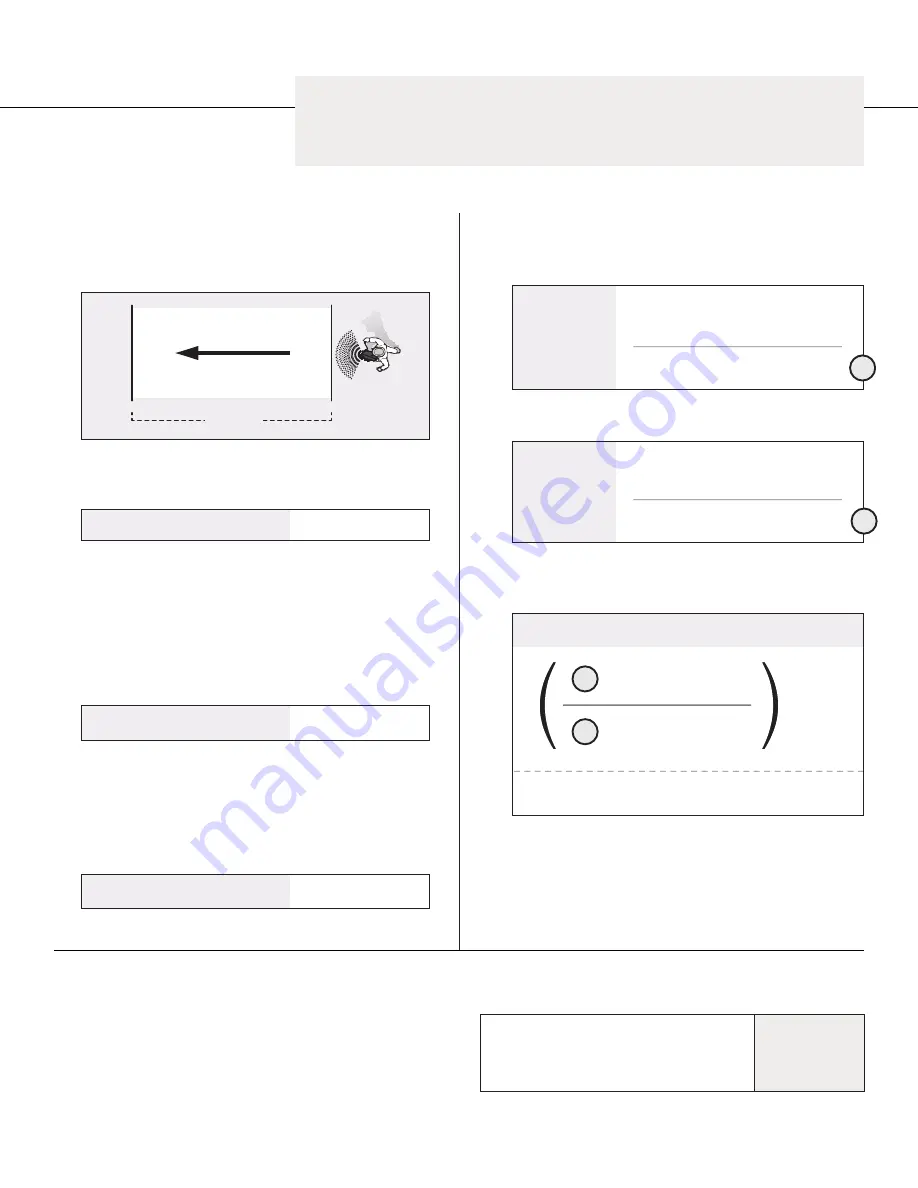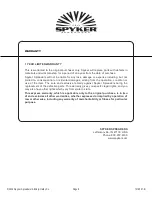
English Manual
Page 6
1019501-B
Use and Care
CalibraTion
1. Measure a distance of 25 feet on grass or another
surface that will prevent the spread particles from
bouncing (such as a large blanket or loose dirt) and mark
a start and finish line.
* NOTE: If the scale reports weight in pounds and
ounces, see appendix A (below) to convert to pounds.
6. Measure in feet the total width of ground that the material
covers. Subtract 4 feet and record this value as the
Spread Width.
SPReAD WIDTH
________ ft
3. Set the calibration knob to the setting that corresponds to
the material most similar to the material you are trialing.
4. Begin to spread material while walking down the track at
a speed of 3 MPH. Turn the crank one full rotation every
other step.
5. Weigh the spreader and record the weight in
pounds as Final Weight.
FINAl WeIGHT
________ lbs
INITIAl WeIGHT
________ lbs
2. Fill the bag approximately 3/4 full & weigh the spreader.
Record this weight in pounds as Initial Weight.
7. Calculate the actual application rate
using the following formulas:
8. Determine the weight of the material spread in pounds:
HOW TO
CAlCulATe
MATeRIAl
SPReAD
Initial Weight ______ lbs
- Final Weight ______ lbs
= Material Spread ______ lbs
A
HOW TO CAlCulATe APPlICATION RATe
= Application Rate ______ lbs/1000 sq ft
Material
Spread
Area
Covered
______ lbs
______ ft
A
B
x 1,000
10. Lastly, calculate the application rate in pounds per 1000
square feet:
* NOTE: To calculate the rate in lbs/acre instead
of lbs/1000 sq ft, multiply the (A/B) value by 43,560.
9. Next, find the area covered in square feet:
HOW TO
CAlCulATe
THe AReA
COVeReD
Spread Width ______ ft
x Length of Track 25 ft____
= Area Covered ______ ft
B
FINISH
ST
ART
25
ft
(The number
12 represents
the ounces)
Appendix A:
Converting pounds-ounces to pounds.
Scales will often report weight in pounds and ounces
instead of just pounds. Use the steps below to convert to pounds.
1. Determine the ounces value on the scale. . . . . . . . . . . . . . . . . . . . . . . . .
example:
10 lbs - 12 ounces.
2. Divide the ounce value by 16 . . . . . . . . . . . . . . . . . . . . . . . . . . . . . . . . . .
example:
12 ÷ 16 = 0.75
3. This decimal will be the decimal value of the weigh in pounds.
Use the weight in pounds for calculate application rate.
example:
10lbs - 12 ounces = 10.75lbs
The goal is to determine which setting on the calibration knob will correspond to the
recommended application rate for the material being spread. The application rate
will be printed on the bag or container that the material was supplied in. Locate the
application rate before proceeding with the calibration trial.


























